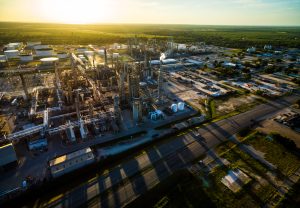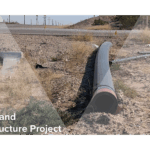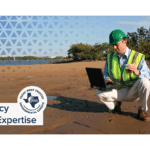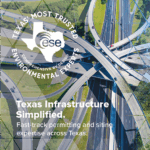
Phase 2 environmental site assessments play a crucial role in determining potential environmental risks on a property. In San Marcos, these assessments are highly important due to the diverse range of industries that have operated in the region over the years. This article explores the key components and significance of Phase 2 assessments, the overall process involved, the regulatory framework governing such assessments, potential challenges, and the impact they can have on property transactions.
Understanding Phase 2 Environmental Site Assessments
Key Components of Phase 2 Assessments
A Phase 2 environmental site assessment typically involves a comprehensive investigation of a property’s subsurface environment. Qualified environmental consultants conduct sampling and testing to assess the presence and extent of potential soil and groundwater contamination. Additionally, this stage of assessment may include soil vapor sampling, asbestos surveys, and other specialized analyses.
The findings of Phase 1 assessments are utilized to identify and prioritize areas of concern or contamination, often referred to as “hotspots.” These hotspots are then further investigated in Phase 2 assessments to determine the precise nature and extent of contamination.
During Phase 2 assessments, environmental consultants employ various techniques to gather data and evaluate the potential risks associated with a property. These techniques may include drilling boreholes to collect soil and groundwater samples, installing monitoring wells to measure groundwater quality over time, and conducting geophysical surveys to map subsurface features. By employing these methods, consultants can gather a wealth of information about the site’s environmental conditions, allowing for a more accurate assessment of potential risks.
Importance of Phase 2 Assessments
Phase 2 assessments are vital to accurately evaluate the environmental conditions of a property. By going beyond the initial screening provided by Phase 1 assessments, Phase 2 assessments provide a more detailed understanding of potential risks. Their thoroughness enables property owners, developers, and potential buyers to make informed decisions about the property’s future use, potential liability, and remediation requirements.
Moreover, Phase 2 assessments are crucial for ensuring compliance with federal, state, and local regulations. They assist in fulfilling due diligence requirements and help in identifying potential liabilities associated with the property.
Furthermore, Phase 2 assessments play a significant role in protecting human health and the environment. By identifying and characterizing contamination, these assessments contribute to the development of effective remediation plans. This ensures that appropriate measures are taken to mitigate risks and safeguard the surrounding community and ecosystems.
The Process of Phase 2 Environmental Site Assessments in San Marcos
Initial Site Inspection and Sampling
The process begins with a thorough site inspection conducted by experienced environmental consultants. They survey the property’s physical features, collect relevant historical data, and assess potential sources of contamination based on past and present land use. Strategic sampling techniques are employed to gather soil, groundwater, and vapor samples from designated areas.
The samples collected during the inspection are then sent to certified laboratories for comprehensive analysis. These laboratories utilize state-of-the-art equipment and techniques to detect and quantify the presence of contaminants, ensuring accurate results.
Laboratory Analysis and Report Preparation
After the completion of laboratory analysis, environmental consultants compile all the data and prepare a comprehensive report detailing the findings. This report includes a description of the investigation methods, results of the laboratory analysis, and a professional interpretation of the findings. It may also include recommendations for further investigation or remediation if necessary.
The report is an essential document during property transactions, as it provides potential buyers with an understanding of any existing environmental hazards or potential remediation costs associated with the property.
Regulatory Framework for Environmental Site Assessments
Federal and State Regulations
Phase 2 environmental site assessments in San Marcos adhere to a comprehensive set of regulations established at both the federal and state levels. The U.S. Environmental Protection Agency (EPA) sets guidelines for conducting environmental assessments under the Comprehensive Environmental Response, Compensation, and Liability Act (CERCLA), commonly known as Superfund. Additionally, each state, including California, has its regulations governing such assessments, which consultants must follow.
By complying with these regulations, San Marcos can effectively assess and mitigate potential environmental risks, protect public health, and preserve the natural environment.
San Marcos Local Environmental Policies
In addition to federal and state regulations, San Marcos has its local environmental policies in place. These policies may include specific guidelines addressing issues such as soil erosion, wetland protection, groundwater management, and air quality control. Environmental site assessments in San Marcos must consider and adhere to these local policies, ensuring full compliance with the city’s environmental standards and goals.
Potential Challenges in Phase 2 Environmental Site Assessments
Dealing with Contaminated Sites
Contaminated sites present unique challenges during Phase 2 assessments. Consultants must carefully manage the sampling and handling of potentially hazardous materials to minimize health risks for both workers and the surrounding community. The identification and quantification of contaminants are crucial for determining appropriate mitigation and remediation strategies.
Additionally, consultants must consider the legal and ethical implications associated with contaminated sites. They must work closely with regulatory agencies and other stakeholders to ensure compliance with all applicable regulations and determine the most effective course of action.
Mitigation and Remediation Strategies
Once contamination is identified, potential mitigation and remediation strategies come into play. Consultants develop comprehensive plans to address the identified contaminants and reduce their impact on the environment and public health. These strategies may include excavation and removal of contaminated soil, groundwater treatment, in-situ remediation techniques, or a combination of methods based on the specific site conditions.
The selection of the most appropriate strategy depends on factors such as the contaminant type, concentration, and extent, as well as the site’s characteristics. Consultants work closely with property owners, regulators, and environmental experts to determine the most effective and cost-efficient approach that protects human health and the environment.
Impact of Phase 2 Assessments on Property Transactions
Risk Assessment for Buyers and Sellers
For potential buyers, a Phase 2 environmental site assessment provides essential information on the environmental risks associated with the property they intend to purchase. It allows them to evaluate the financial implications of possible remediation costs, potential legal liabilities, and any overall impact on property value. Armed with this knowledge, buyers can make informed decisions and negotiate purchase prices accordingly.
For sellers, conducting a Phase 2 assessment before listing their property can serve as a proactive measure. Understanding and addressing any environmental issues in advance allows sellers to present the property with confidence, potentially leading to smoother negotiations and faster transactions.
Influence on Property Value and Development Potential
Phase 2 assessments have a considerable influence on property value and development potential. Properties with a clean bill of health from Phase 2 assessments often command higher prices and attract more interest from potential buyers. The absence of environmental risks provides reassurance and confidence to investors and lenders, facilitating smooth financing and development processes.
On the other hand, properties with significant environmental challenges may require extensive remediation efforts, impacting their value and limiting development possibilities. Investors interested in purchasing such properties can leverage Phase 2 assessments to negotiate lower prices and prepare appropriate strategies for remediation and redevelopment.
In conclusion, Phase 2 environmental site assessments are critical for evaluating potential environmental risks in San Marcos properties. By understanding their key components, the overall process, the regulatory framework, potential challenges, and their impact on property transactions, stakeholders can navigate the complex landscape of environmental assessments with confidence and ensure the sustainable development and future of these properties.
Understanding the complexities and potential environmental risks of your San Marcos property is essential for responsible development and investment. ESE Partners is dedicated to guiding you through the intricate process of Phase 2 Environmental Site Assessments with our team of expert environmental engineers and scientists. We’re committed to delivering opportunity and enhancing community quality of life through innovative, sustainable solutions. If you’re ready to ensure the sustainable development and future of your property, Request A Proposal from ESE Partners today and move your business forward responsibly.








